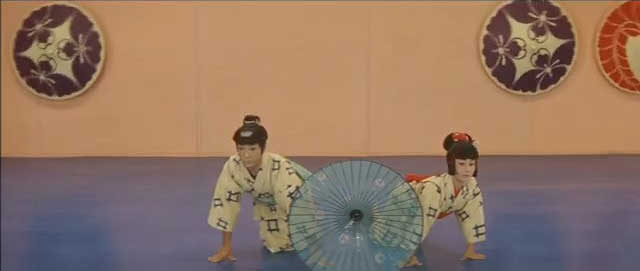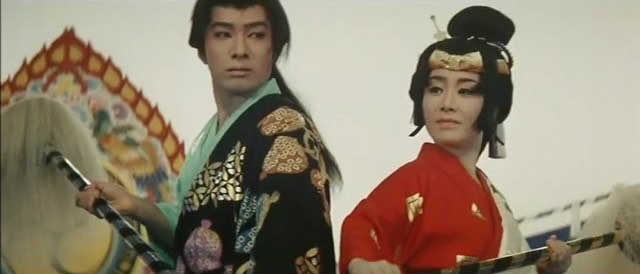Snake Princess
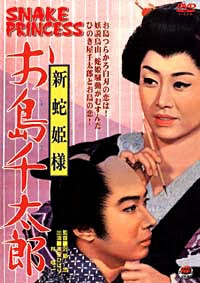
Director: Sawashima Tadashi
Year: 1965 (I think)
Duration: 1:28
Country: Japan
Hibari Misora was nearing the end of her
film career when this was made in 1965 even though she was to go on for many
more years as a popular singer until her death in 1989. Japanese film
was going through major changes by the mid-1960’s in terms of subject matter,
graphic depiction of violence and sex and a much more realistic razor sharp
critical look at society, but none of that makes an appearance in this old-fashioned
period confection. The filmmakers throw in a little bit of everything from
samurai sword slashing to ghosts that turn into snakes to betrayal to love
and this being a Hibari Misora film, a few colorful musical numbers. It
is all rather fun and fast moving with a convoluted plot that jumps around
like it is walking barefoot on hot embers.
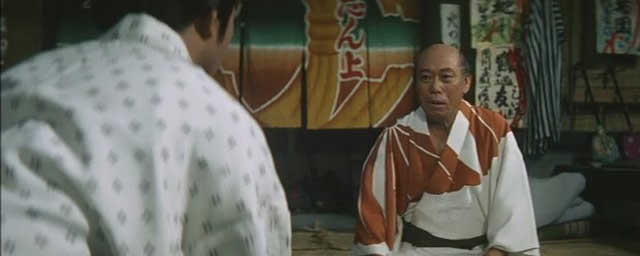
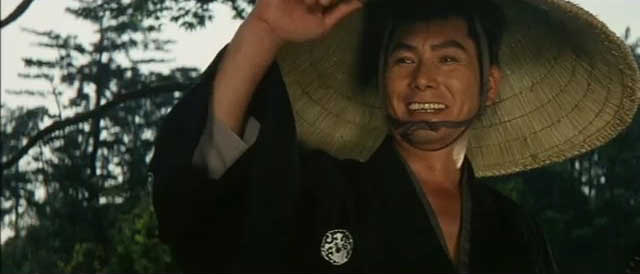
Hibari plays Oshima, a singer in a travelling
troupe of entertainers who has a love for saki (as did Hibari) and so confesses
to a passing samurai (Ittosai) that wine will be her downfall. The samurai
and the singer part ways, she to catch up with her troupe, he to go to Karasuyama
where trouble is brewing. The troupe and the trouble are soon to intersect
and much grief is to follow. In Karasuyama, the brutish son of the Conciliator
of this domain kills the owner of a restaurant in a drunken rage and the
son of the owner, Sentaro (Hayashi Yoichi), in return revenges his father
with a swift cut to the throat. He has to quickly flee leaving his sister
Suga to care for the restaurant. A country wide manhunt is soon under way
for Sentaro but he finds refuge with Oshima and the troupe and is soon her
leading man in more ways than one.
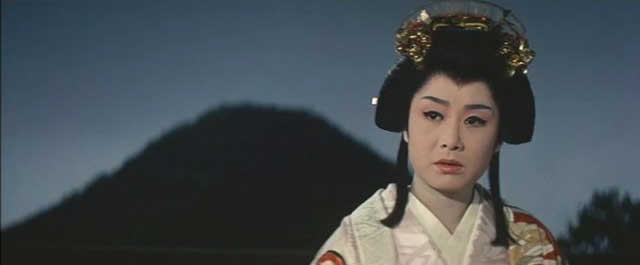
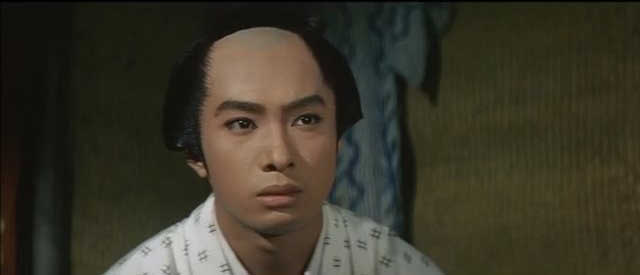
Things seem idyllic for a while and Karasuyama
far away but events bring Sentaro home for further revenge where he meets
Princess Koto, who is also played by Hibari but oddly no one notices the
resemblance and this peculiar plot point is never brought into play. Maybe
they were just saving money. But more of Hibari is never a bad thing. The
only disappointment really is that other than a montage of musical numbers
(shown below) there is no more. What they do have though is rather
fun and far from traditional for that time period. More MGM than Meiji. Hibari
starred in over 160 movies from 1949 to 1971 but her films slowed to a crawl
from 1965 on. I would guess that personal problems, exhaustion and the changing
nature of Japanese movies had much to do with her pull back from films as
she was still only in her early 30’s. Since I can’t really find any information
on this film or see it even listed on a few of her filmographies, I don’t
imagine it has much of a reputation but I quite enjoyed it.
